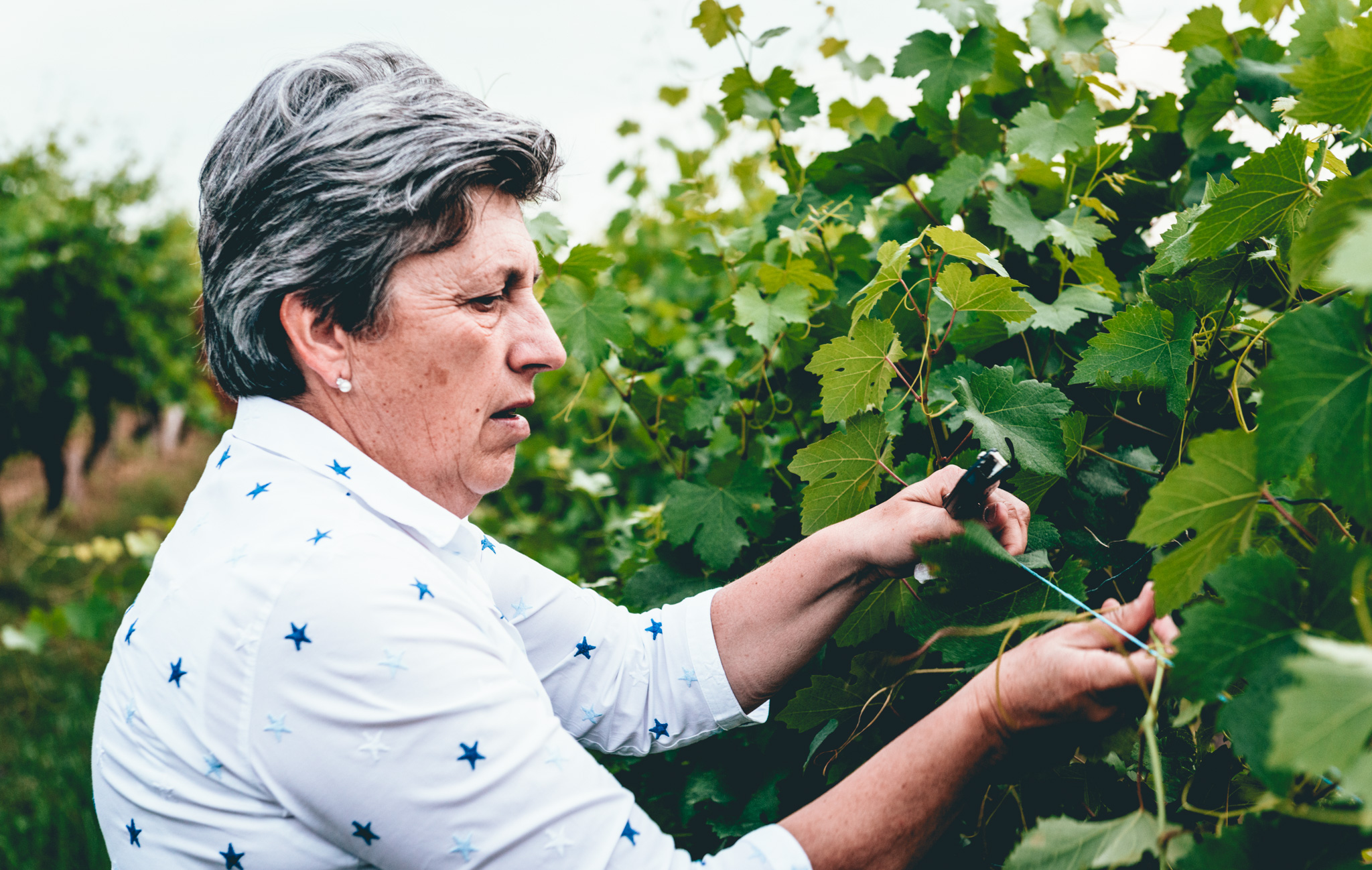
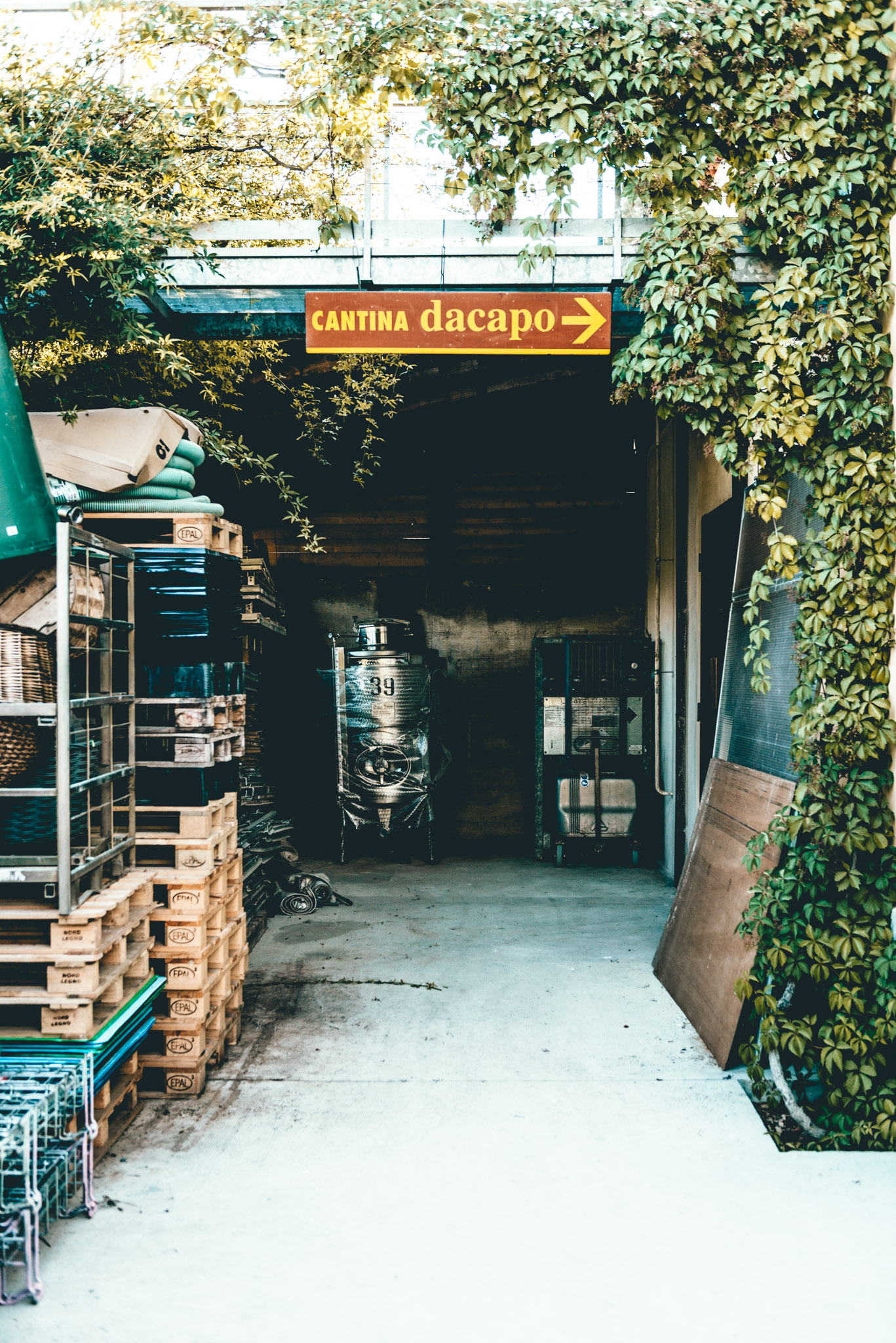
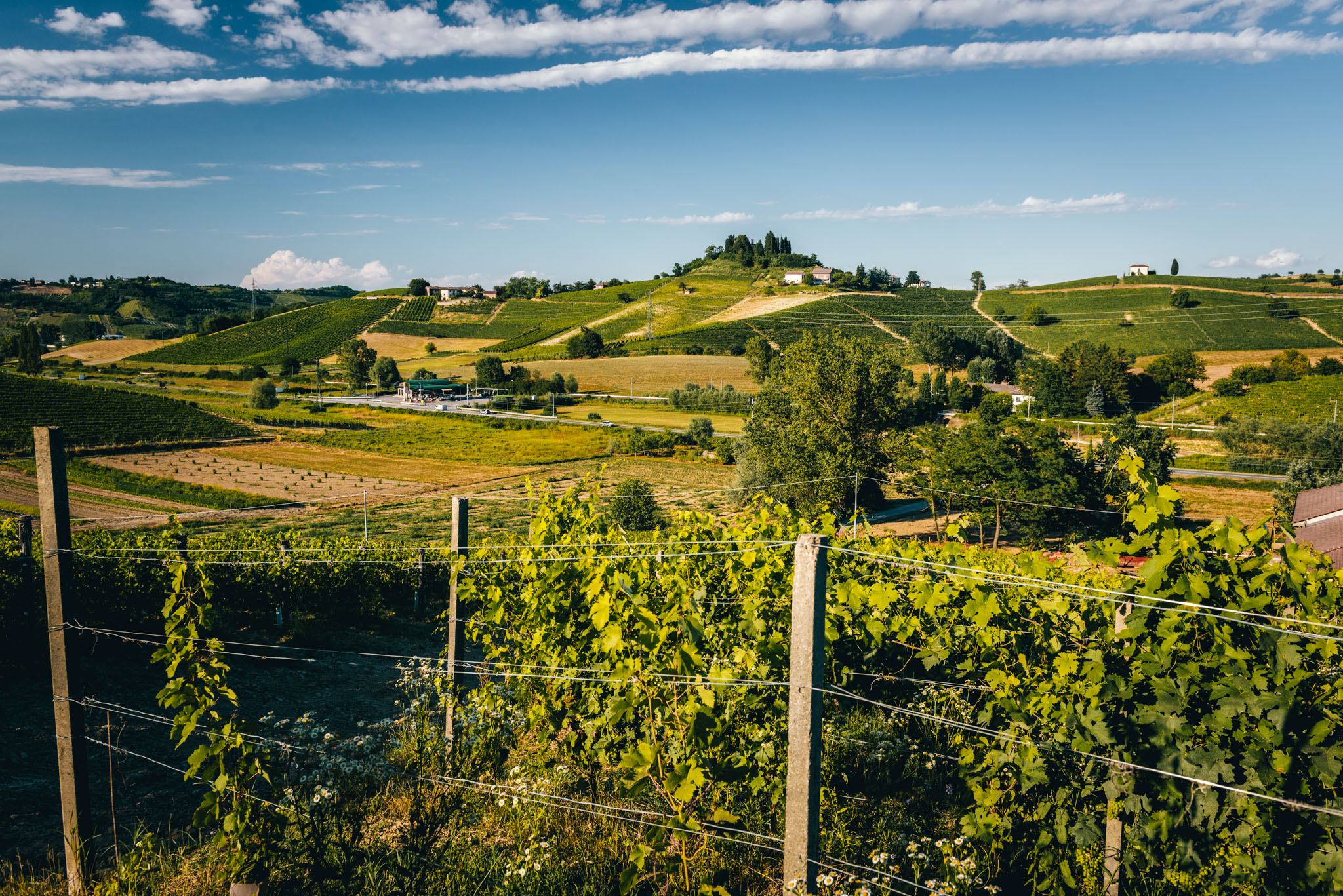
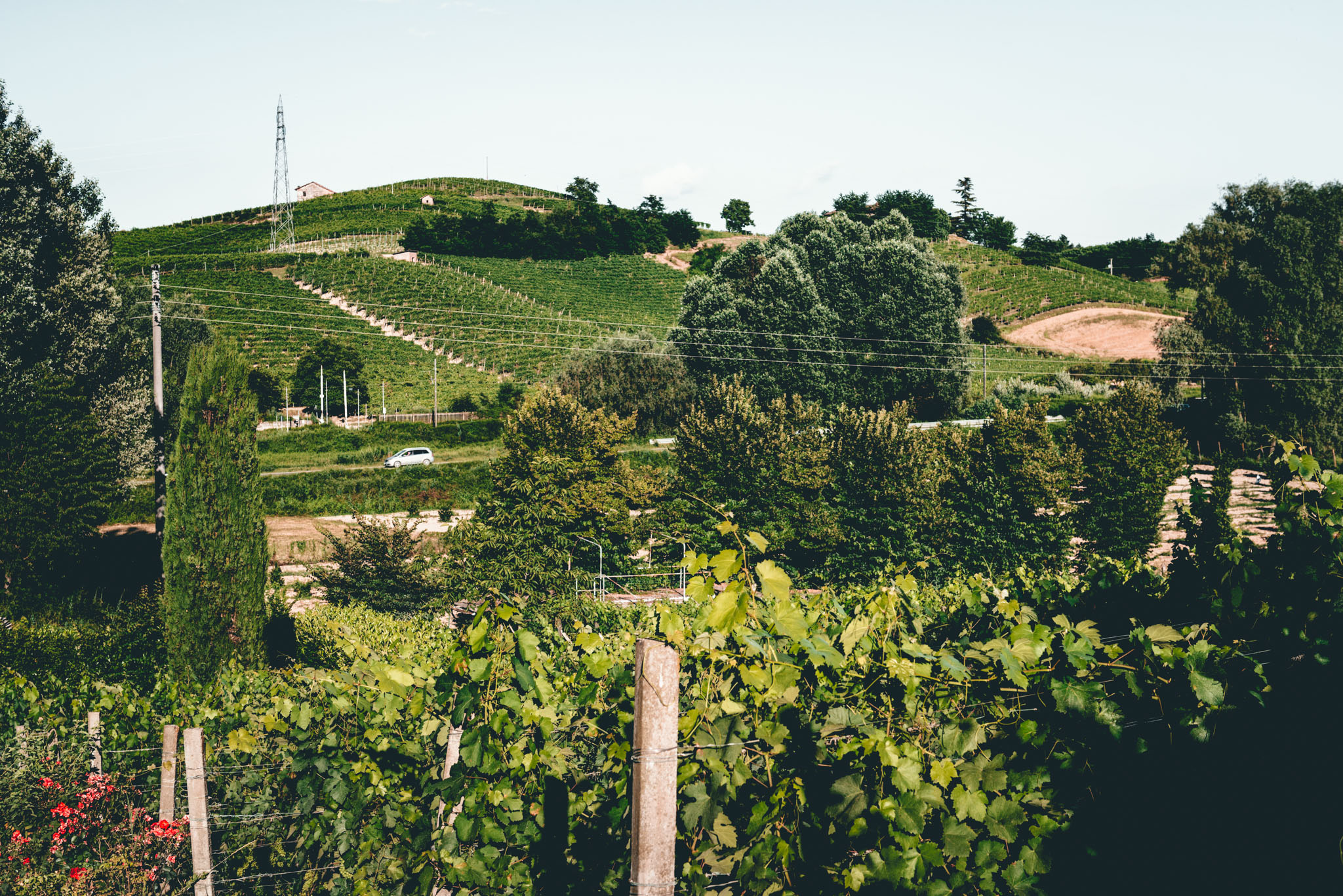
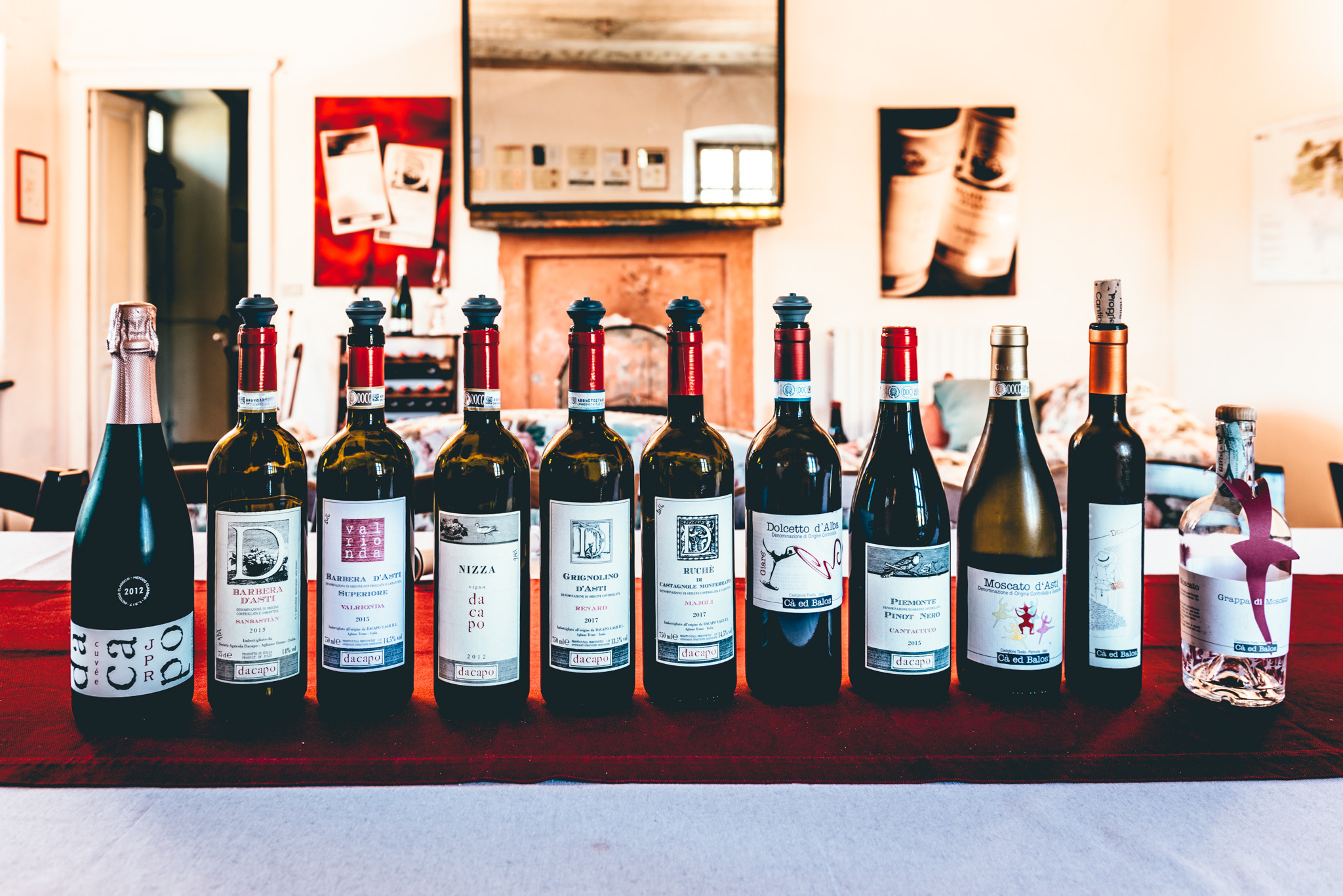

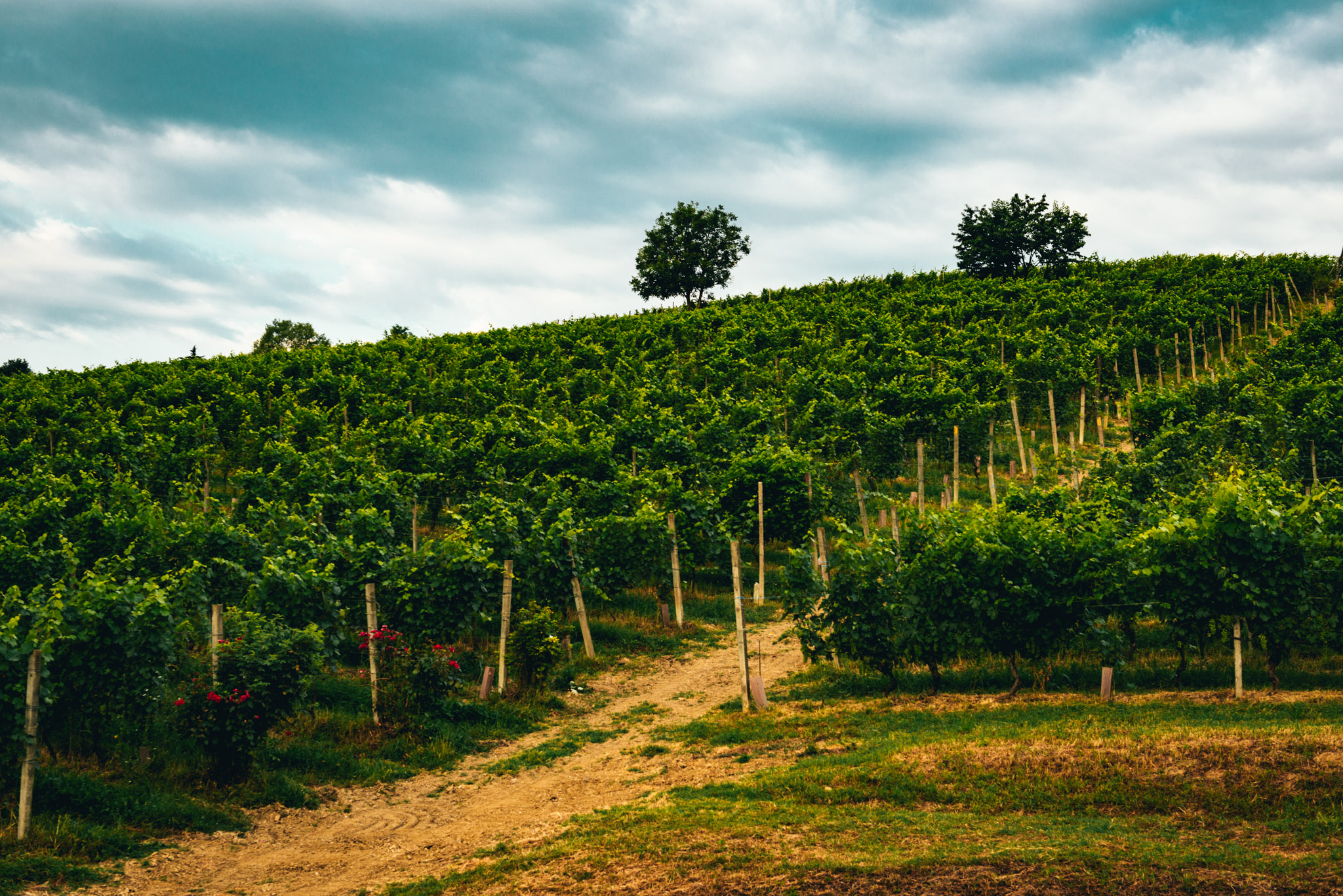
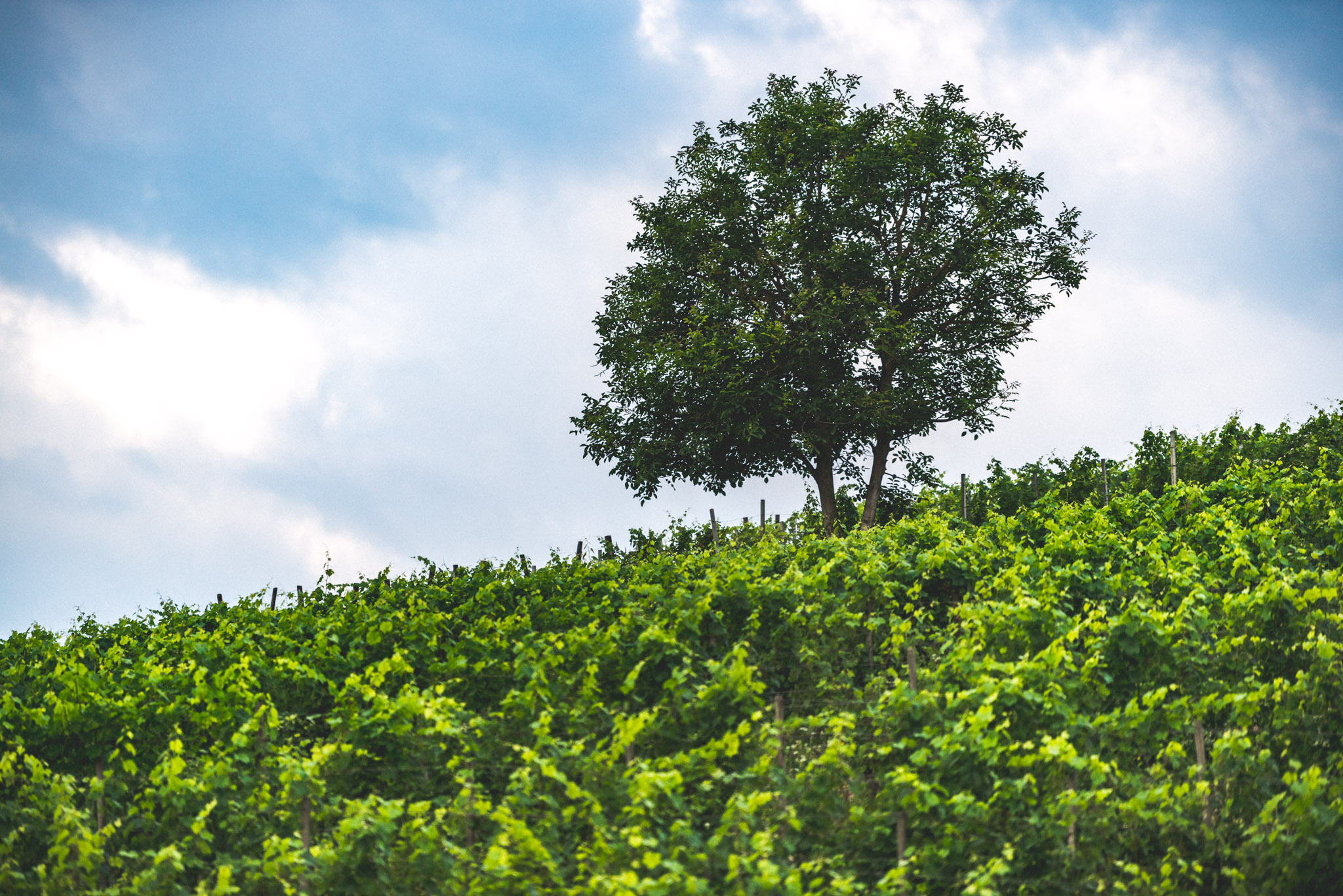
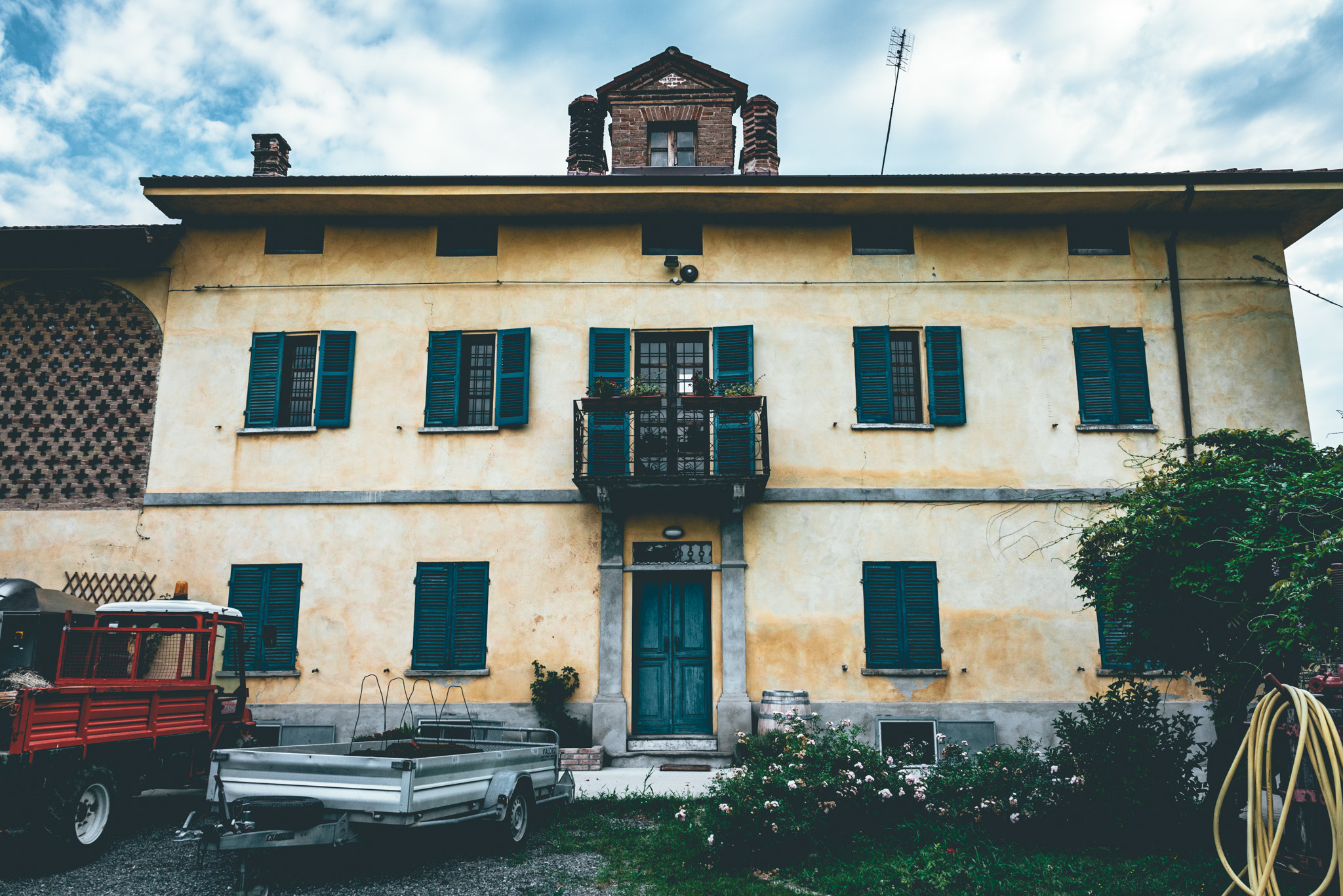
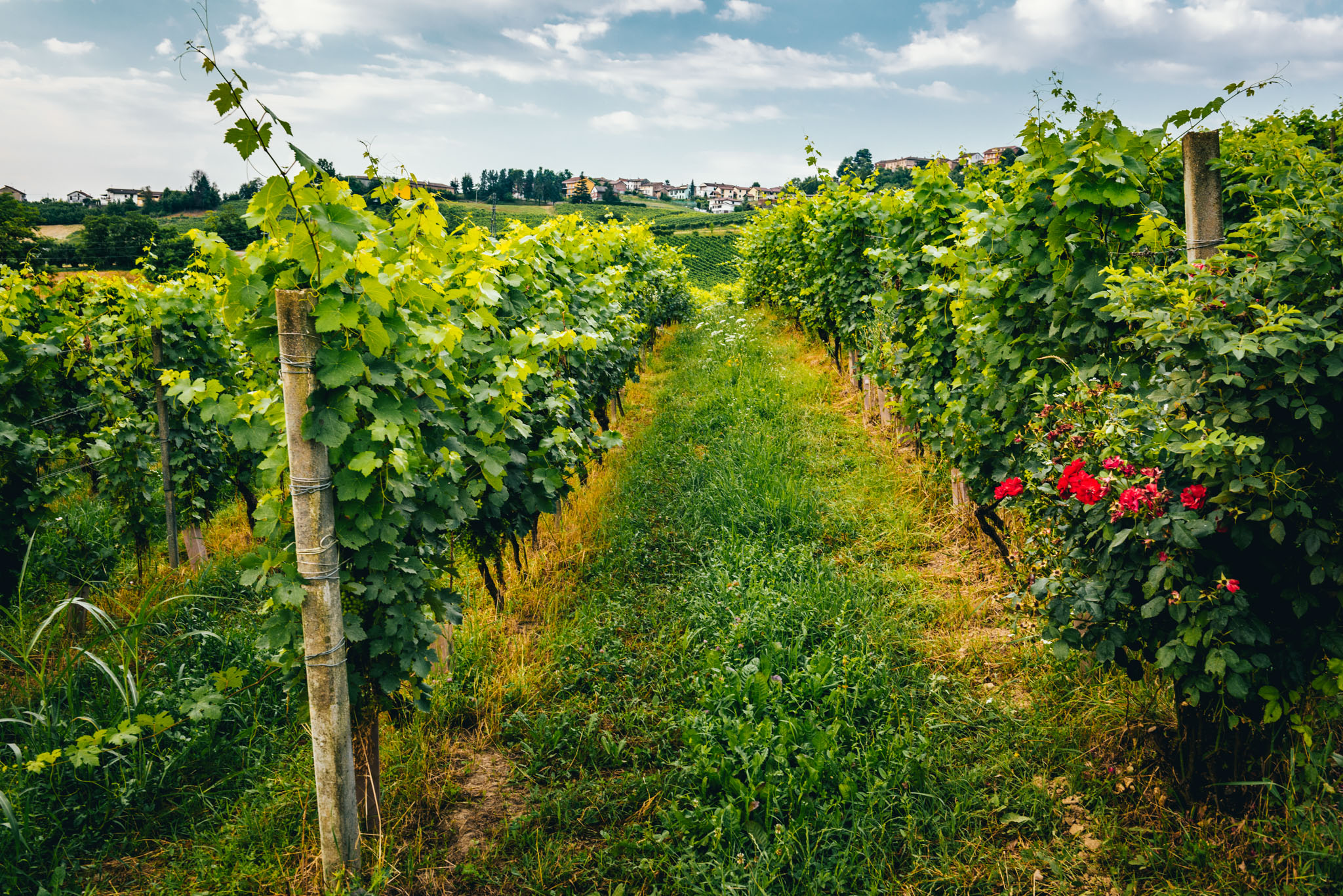
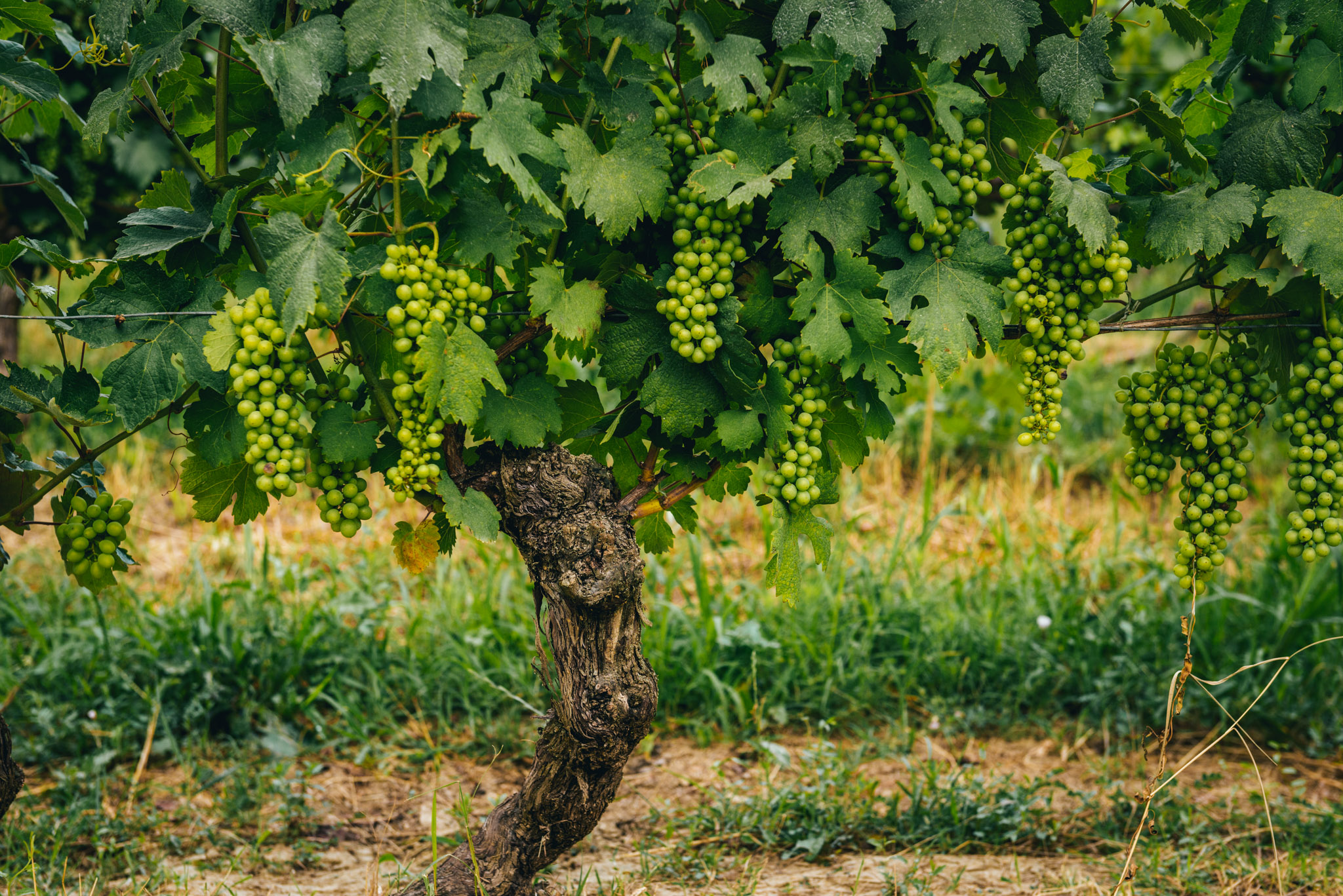

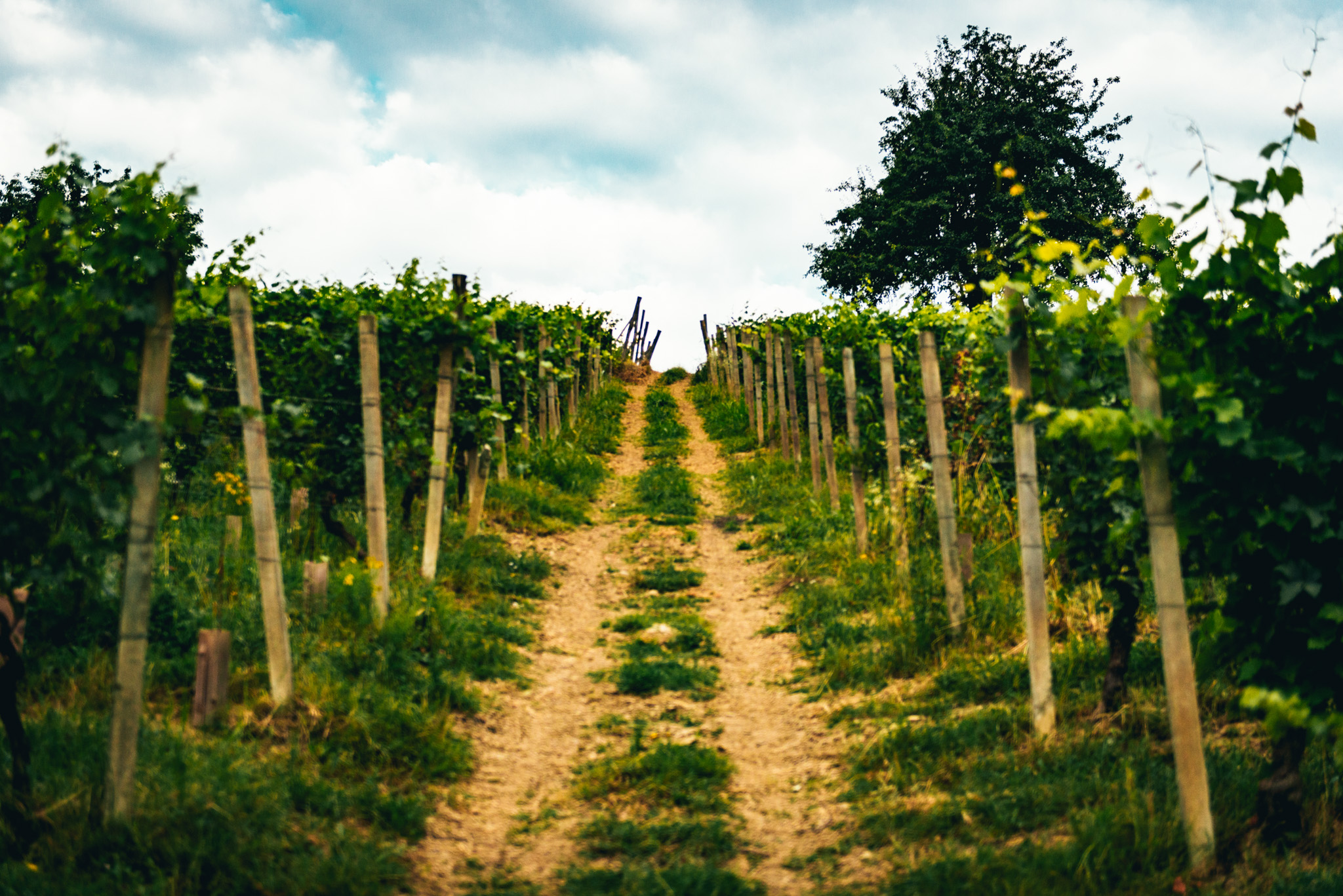
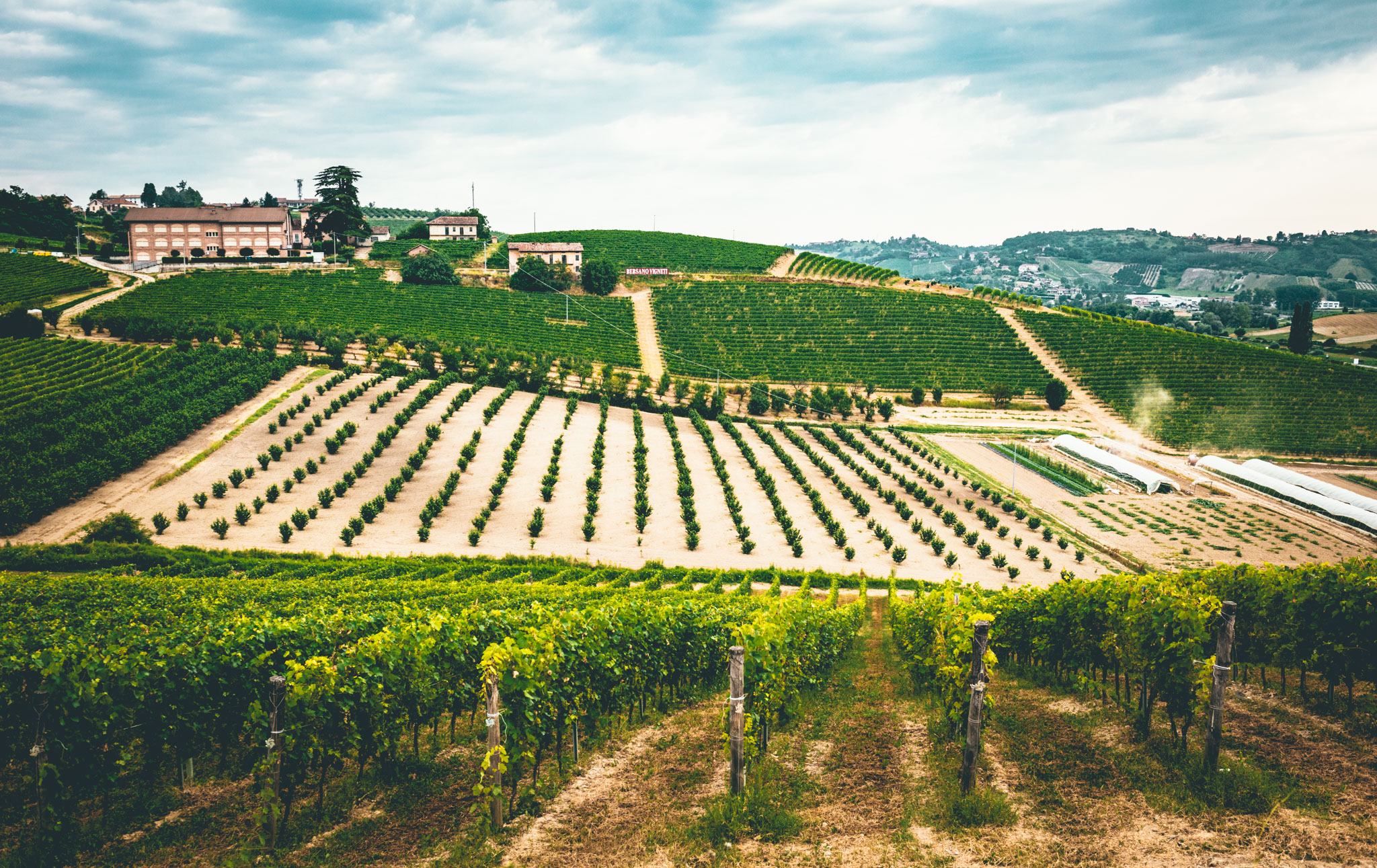

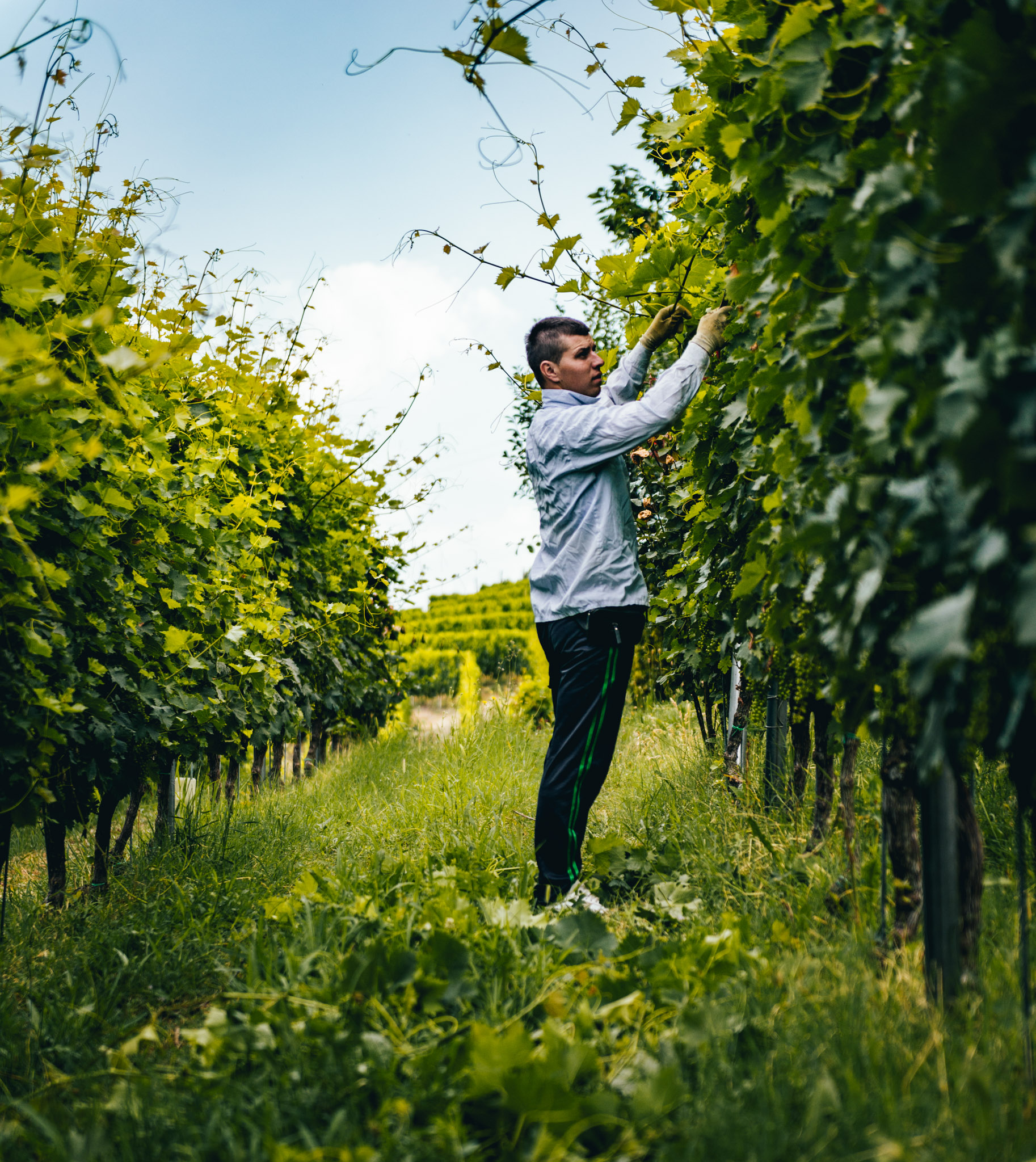
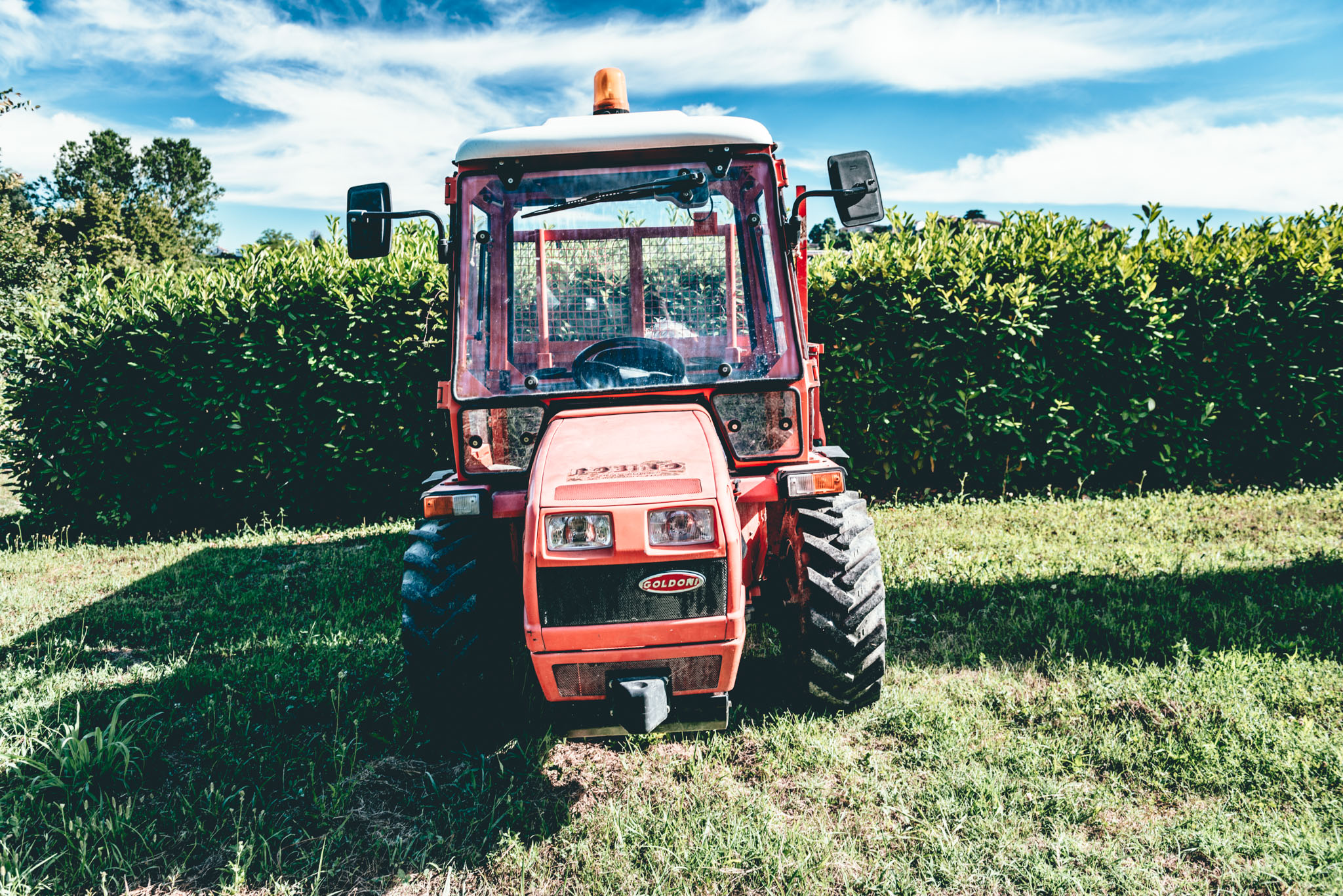
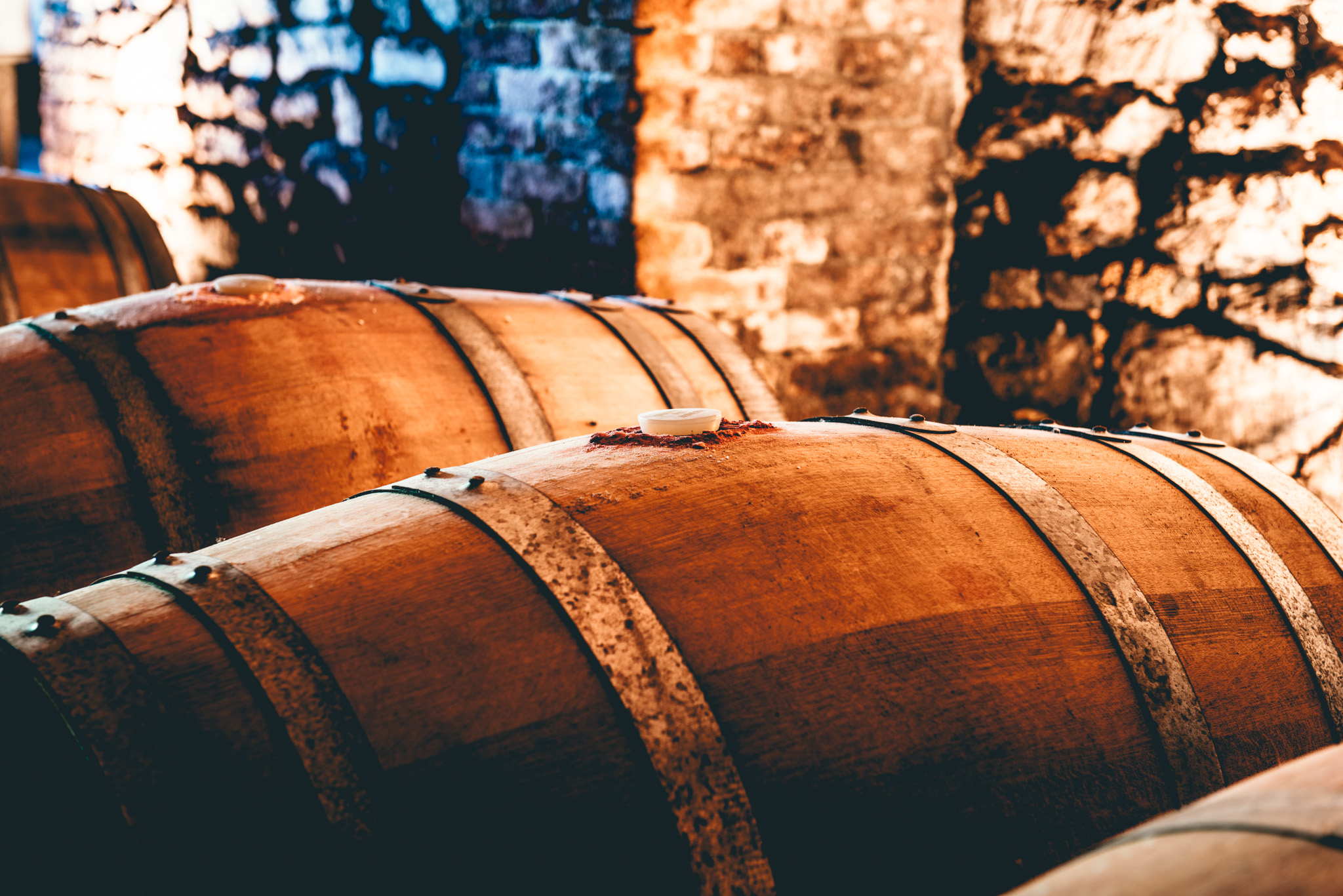
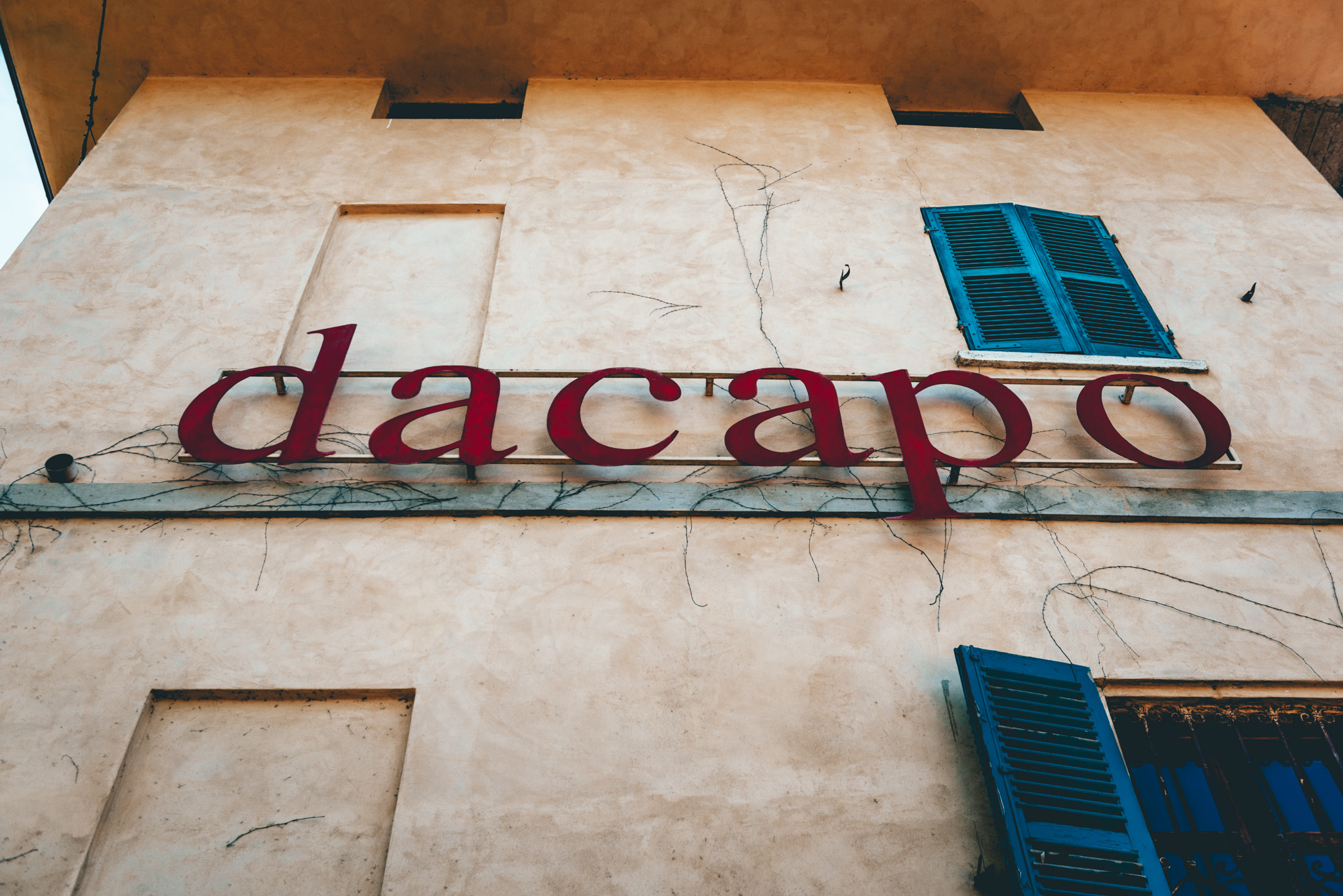
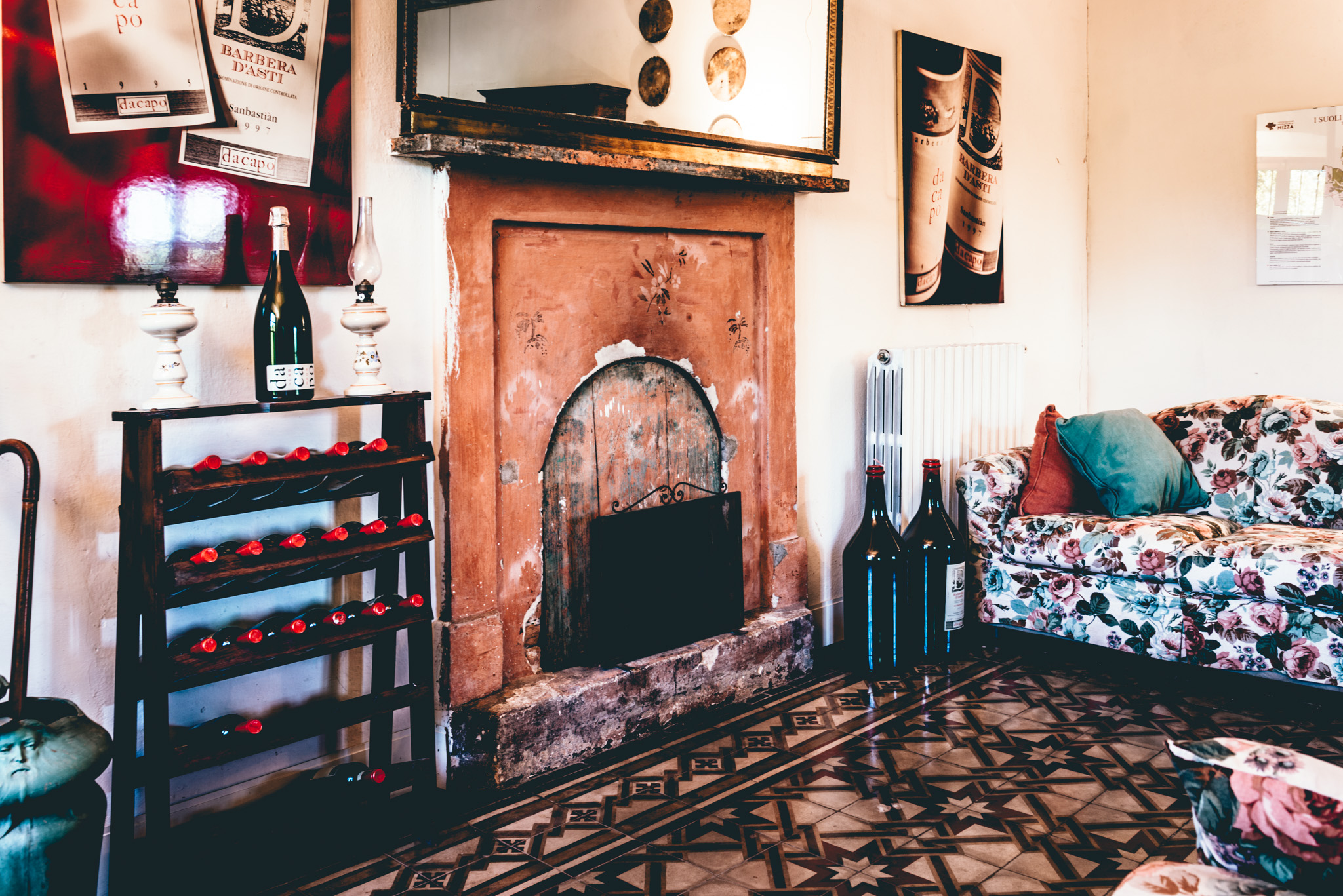
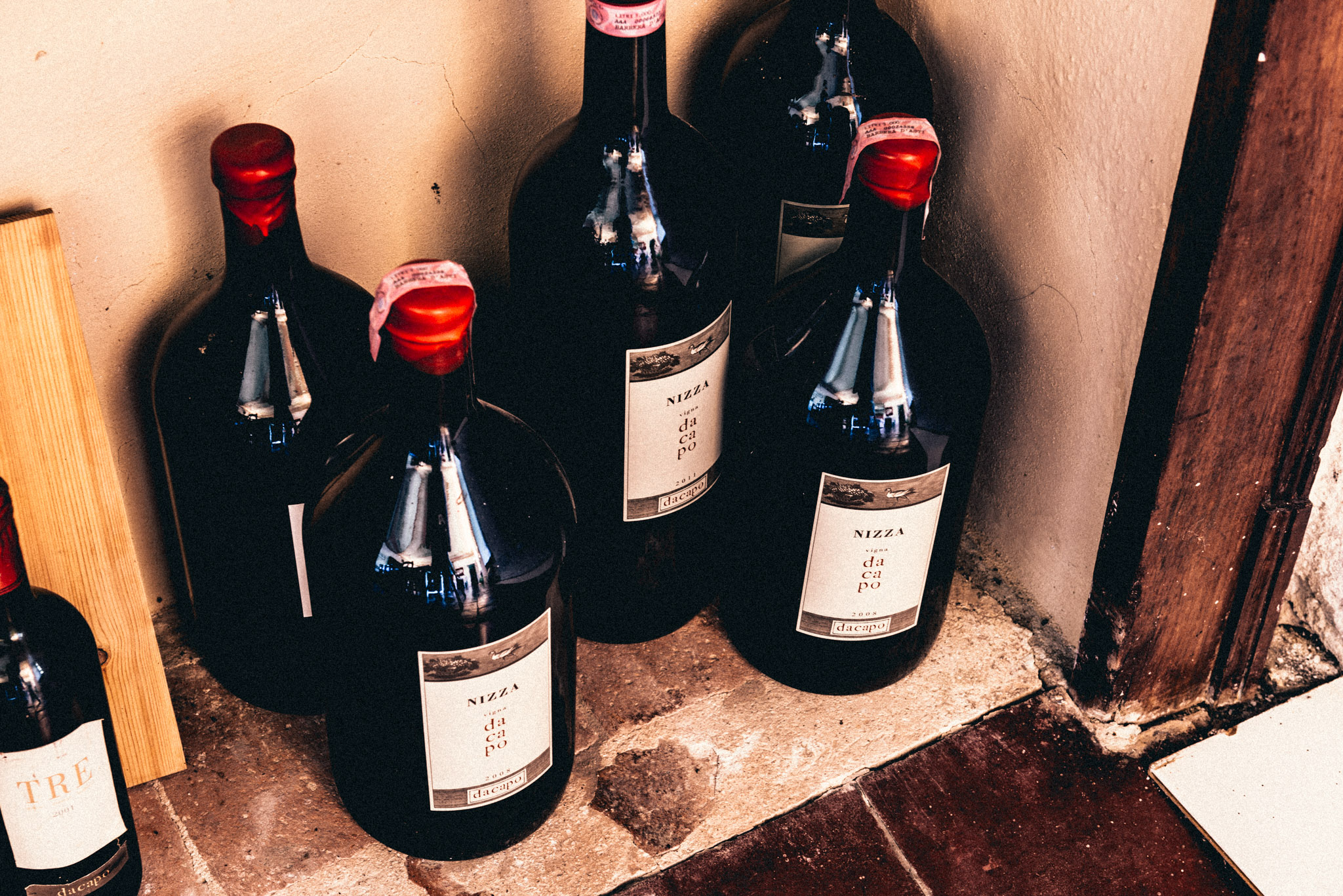
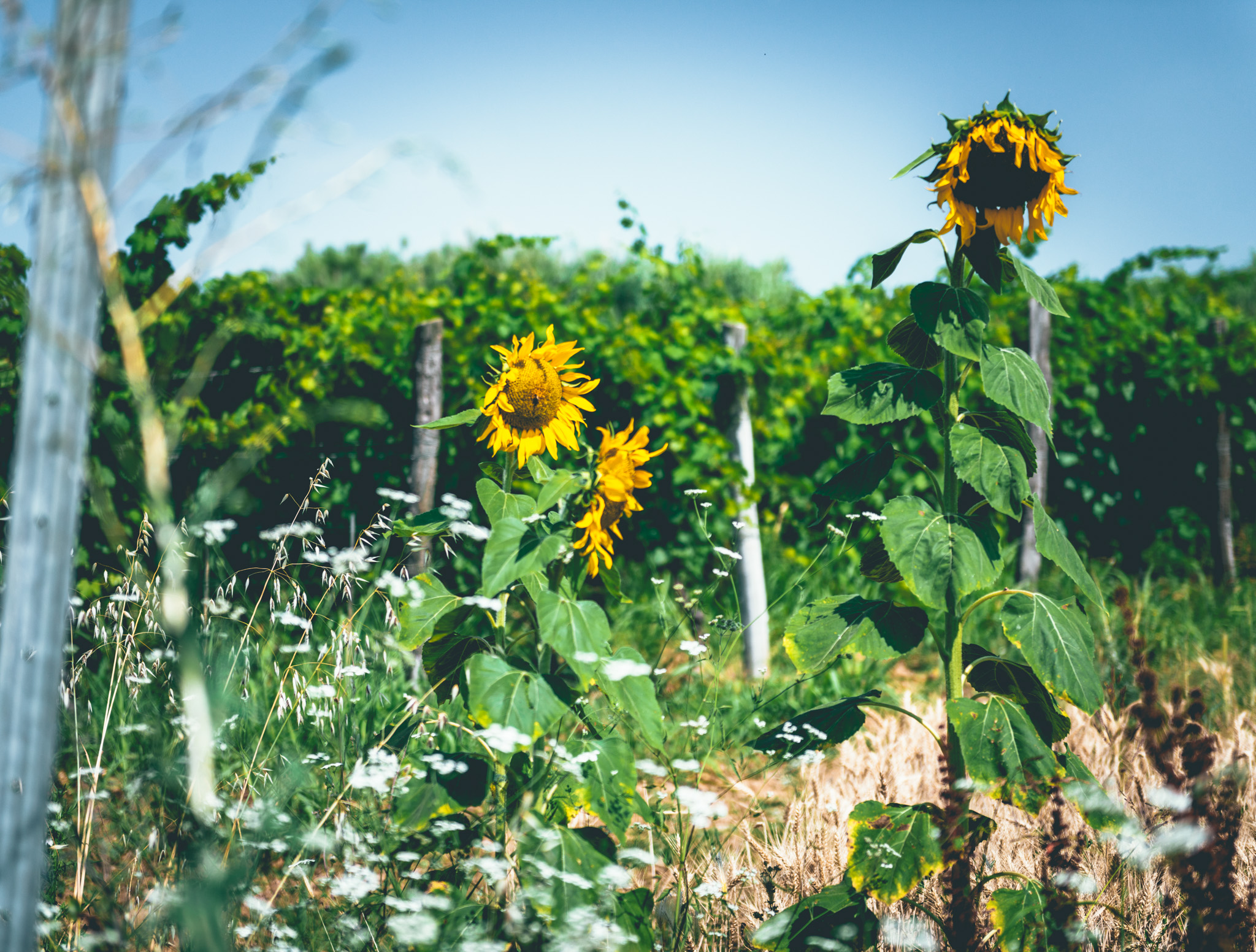
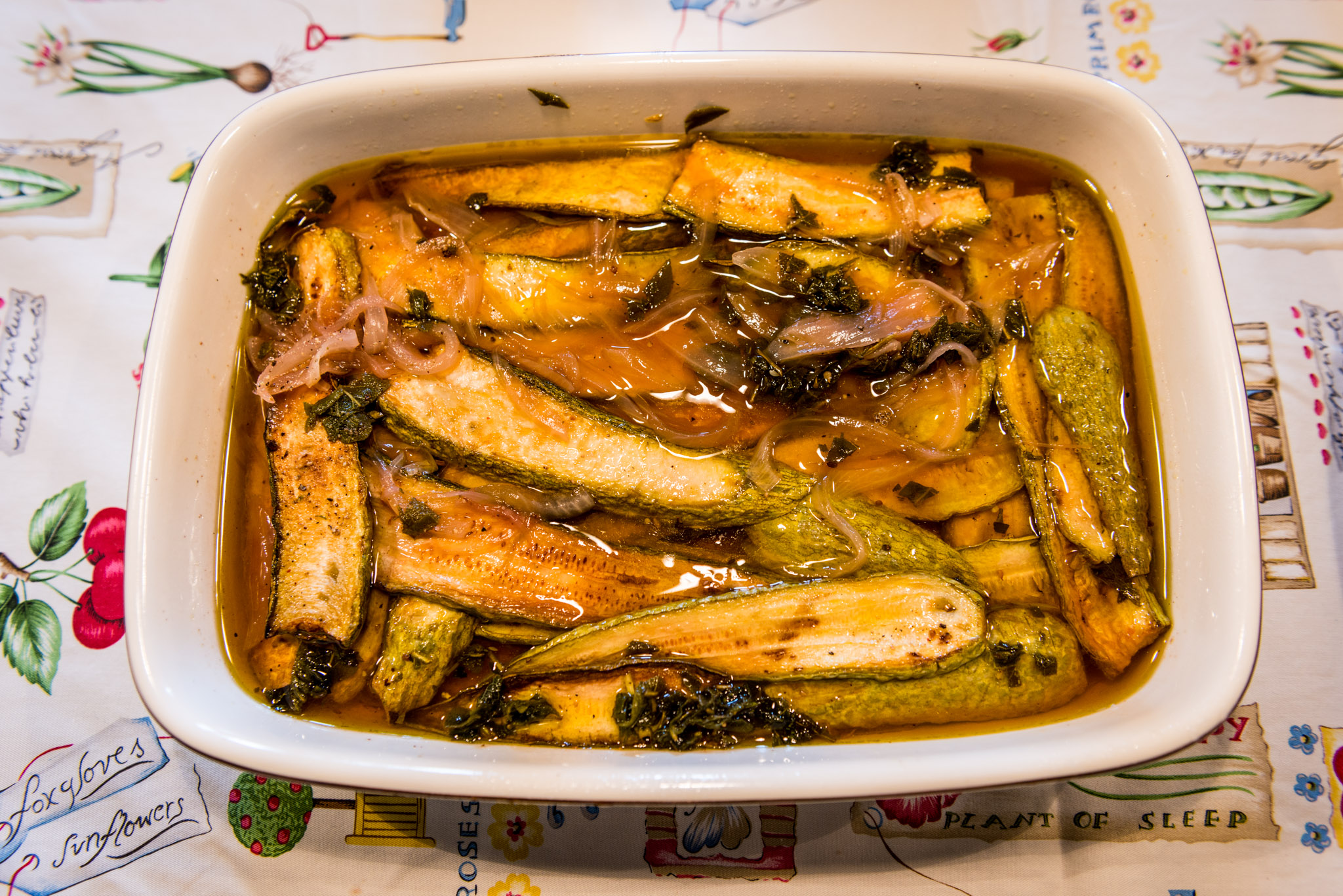
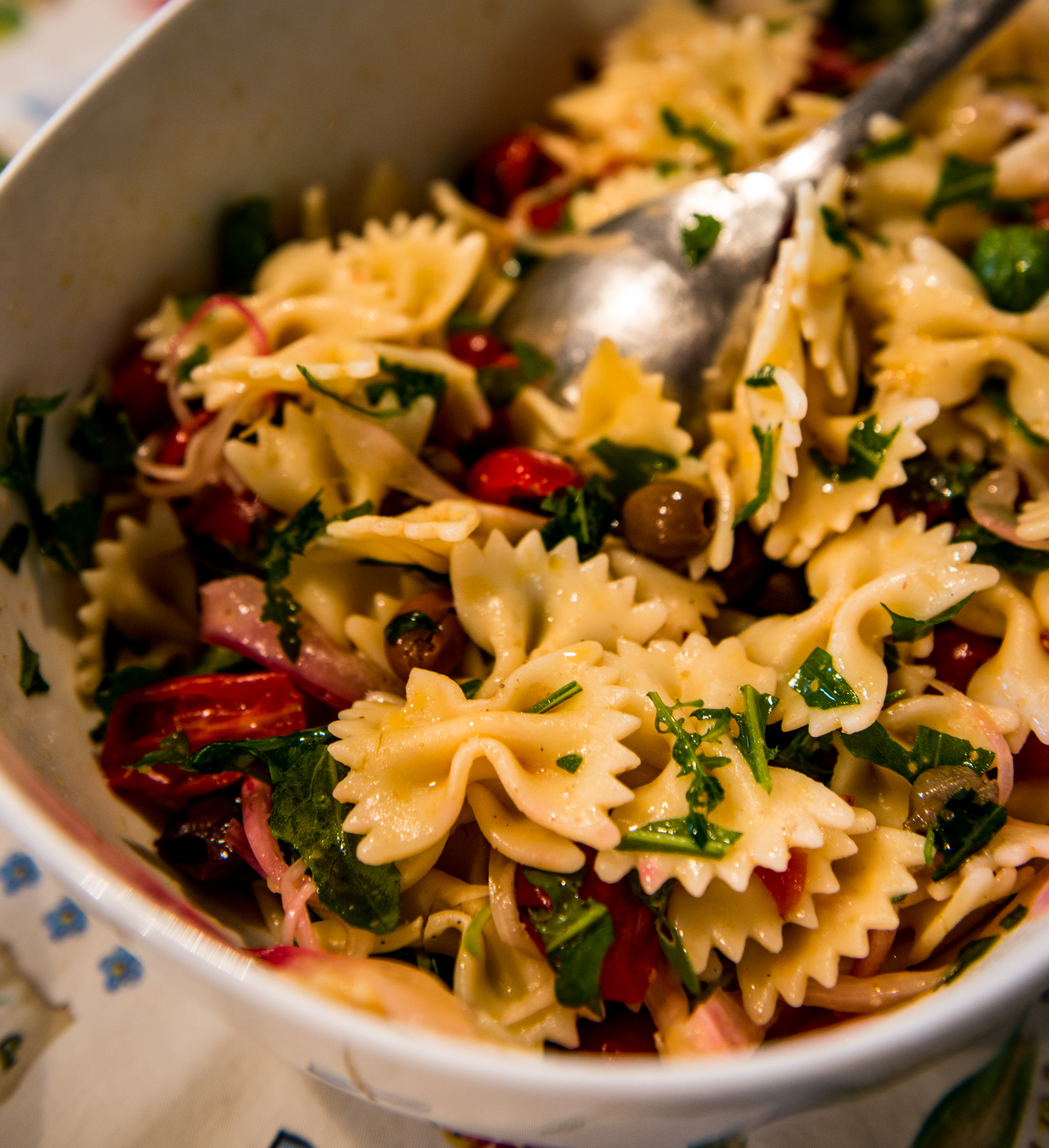

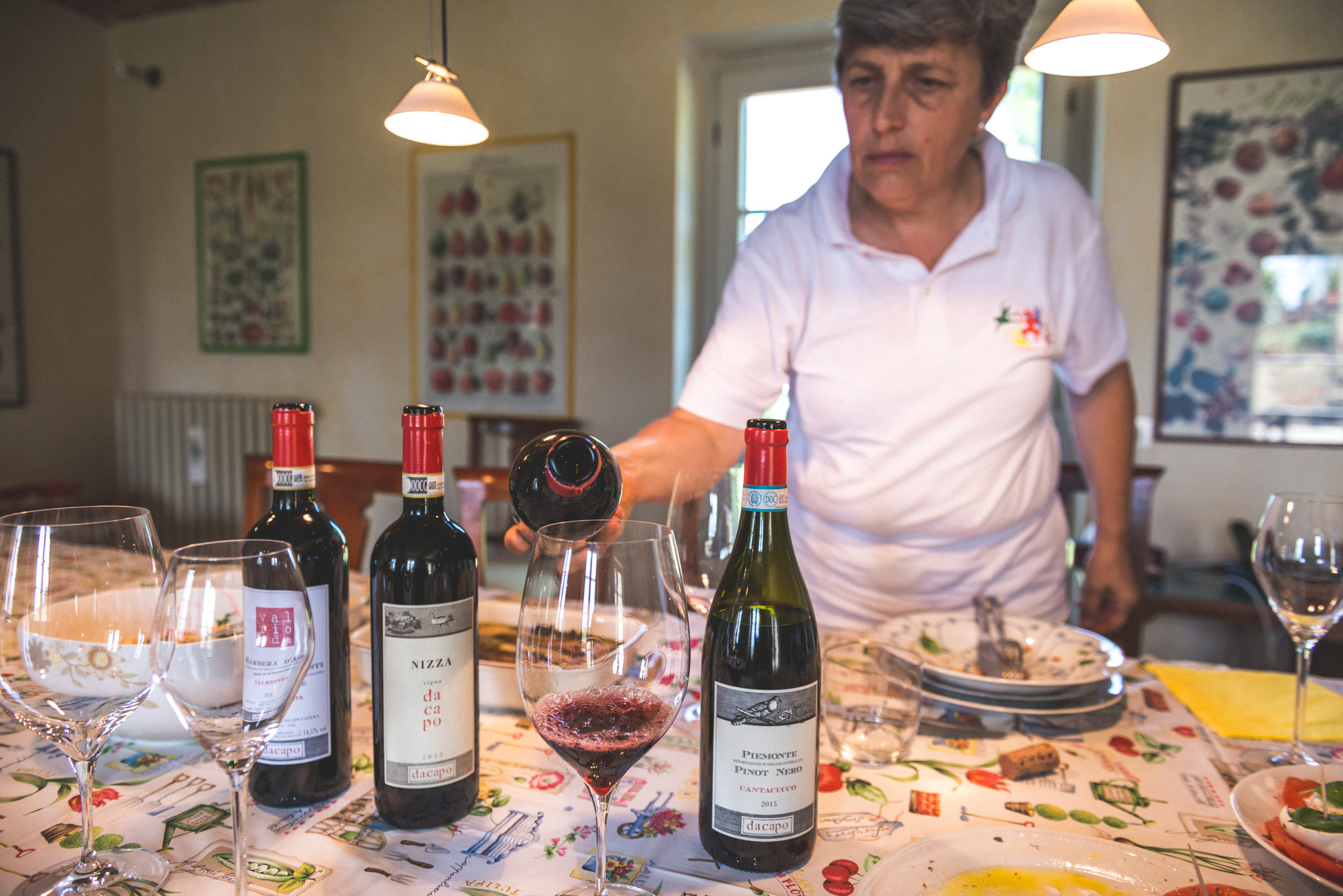

DaCapo
Who: Renata Bonacina
Where: Agliano Terme (Piemonte, Italy)
What grapes: Barbera, Ruche, Pinot Noir, Nebbiolo, Chardonnay (for sparkling wine)
Key facts: dacapo means from the top. Renata Bonacina is the owner of two small farms, Ca ed Balos (which means house of the naughty boy in Piedmontese) and dacapo.
Website: http://mymoscato.com/en/
Instagram: @acapo_caedbaloswines
Cà ed Balos “L’Attesa” Piemonte Rosato DOC
Viticulture: Certified organic / Vegan
Soil type: Clay, Marl and sand.
Elevation: 220m - 230m Merlot vineyards are located in Agliano Terme, while Nebbiolo vineyards in Castagnole Monferrato.
Grapes: 80% Nebbiolo, 20% Merlot
Method of fermentation: Hand-harvested into small boxes at the end of September. The vinification process starts with a soft pressing of the grapes, similar to making a white wine. Renata and Giovanni employ a press which has the capability to keep the must under nitrogen, to avoid oxidation, and maintain the aromas of the grapes. The must then naturally decants. Fermentation takes place in steel tank at a controlled temperature (14/16°C). The wine remains in steel tank for 6 months, and it is then bottled and finally aged for at least 3 months before distribution.
dacapo “Majoli” Ruchè DOCG
Viticulture: Certified organic / Vegan
Soil type: calcareous and clayey
Elevation: 230m the vineyards are located in Castagnole Monferrato. Exposition South, South-East. Growing system is guyot.
Grapes: Ruchè
Method of fermentation: Hand harvested. After destemming and pressing, the Ruché must macerates on its skins for about 10 days. Fermentation then occurs in temperature-controlled stainless steel tank. After the malolactic fermentation, the wine is then left to decant for 6 months till the following spring, and is then bottled. It this stage dacapo ages its Ruché in bottle for additional 4 months before distribution, to give the best expression of this very special terroir.
It smells like raspberry and Dr. Pepper to me. Also roses and violets. Then black pepper, and cinnamon. There’s loads going on! If you are fond of aromatic reds with some texture and ripeness, look no further. Ruché can be high in alcohol, this bottling comes in at a very moderate 13.5%. Drinking this makes me want Vietnamese-style crispy quail, rubbed in fish sauce and sugar, and then grilled. I also love eating tiny birds in general. Makes me feel like a giant. — JM
dacapo “Renard” Grignolino d’Asti DOC
Viticulture: Certified organic / Vegan
Soil type: calcareous and slightly sandy. Some clay.
Elevation: 220m vineyards are located in Agliano Terme exposition East - North-East
Grapes: Grignolino
Method of fermentation: Hand harvested. After destemming and pressing, grapes are macerated on their skins for 6 days. Alcoholic and malolactic fermentation follows in temperature-controlled steel tanks. The wine then decants till spring, when it is bottled. dacapo age their Grignolino in bottle for additional four months before distribution.
dacapo “Sanbastian” Barbera d’Asti DOC
Viticulture: Certified organic / Vegan
Soil type: calcareous and slightly sandy. Some clay.
Elevation: 220m+ the vineyards are located in Agliano Terme, grown in guyot system, exposition East, South-East
Grapes: Barbera d’Asti
Method of fermentation: Manual harvest. After destemming and pressing, fermentation follows for about 15-20 days at a controlled temperature. After fermentation, the wine is transferred to 55hl French Allier oak casks, where it remains for about 11 months, until the following harvest. The wine is then bottled in November or December, and remains to age in bottle for additional 3 months before distribution.
dacapo “Vigna dacapo” Nizza DOCG
Viticulture: Certified organic / Vegan
Soil type: marlstone, calcareous, clayey
Elevation: 220m+ dacapo’s Nizza vineyard is located in Agliano Terme. Exposition is South-East. Guyot trellising.
Grapes: Barbera
Method of fermentation: Hand-picked. After de-stemming and pressing the grapes, dacapo macerate the must on the skins. Fermentation follows for 15-20 days, at controlled temperature in a French Allier oak vat. At the end of the malolactic fermentation, the wine is transferred smaller oak barrels to age for 24 months. The size of the barrel is determined by the vintage. After bottling, the wine remains in cellar for at least 12 months before distribution.
2017 Nizza DOCG Nizza is a cru for Barbera. This is an exciting development that began in 2014. The wines must be grown in a certain elevation range within the designated Nizza zone. The sites can’t be north facing. Renata’s Nizza (100% Barbera) comes from a vineyard planted in 1960. Maximum permissible yields are low, nine tons per hectare. Renata’s old parcel yields a scant six tons per hectare. The 2017 vintage was shaped by high summertime temperatures and no rain for three months (in that regard, similar to 2022.) — JM
April 2022
I had to catch up with Renata and Giovanni at Slow Wine Bologna the moment I arrived, because they were sneaking out early to catch a plane to Copenhagen, Denmark, and then Malmo, Sweden. Yet more wine events bekon. I’m glad dacapo are doing a brisk business in Scandinavia. I know it has been a challenging series of years for many small farmers whose wines we import. Dacapo is no exception. Their cellar and vineyard work have transformed the property, setting Renata and Giovanni up for reaching a new plateau of quality in years ahead. But all that hard work required cash, and the Covid weakened many wine markets in Italy.
In spite of all the challenges facing winemakers today (drought, expensive bottles, wobbly restaurants) the couple were in good spirits. I love how much Giovanni smiles. He has the easy demeanor of a man thoroughly enjoying his honest vineyard work. He’s already got a good summertime tan. Farming is a second career for him. His first line of corporate work brought the couple for a time to live in North Carolina! It’s nice to talk with Italians who understand in greater detail where we’re from.
With time in short supply, we dove into tasting wine.
New Arrivals:
2020 Ruché di Castagnole Monferrato smells like raspberry and Dr. Pepper to me. Also roses and violets. Then black pepper, and cinnamon. There’s loads going on! If you are fond of aromatic reds with some texture and ripeness, look no further. Ruché can be high in alcohol, this bottling comes in at a very moderate 13.5%. Drinking this makes me want Vietnamese-style crispy quail, rubbed in fish sauce and sugar, and then grilled. I also love eating tiny birds in general. Makes me feel like a giant.
2019 Barbera Sanbastian has an abundance of fresh black fruit. And really good texture. This is a wine that rarely deviates from its high standard of quality, and the 2019 is no exception. It’s aged in large oak barrel (not toasted.) 2019 Sanbastian has pretty nice balance, surprising given the higher (15%) alcohol.
2017 Nizza DOCG Nizza is a cru for Barbera. This is an exciting development, a development that began in 2014. The wines must be grown in a certain elevation range within the designated Nizza zone. The sites can’t be north facing. Renata’s Nizza (100% Barbera) comes from a vineyard planted in 1960. Maximum permissible yields are low, nine tons per hectare. Renata’s old parcel yields a scant six tons per hectare. The 2017 vintage was shaped by high summertime temperatures and no rain for three months (in that regard, similar to 2022.)
2016 Barbera MAGNUMS You will remember this wine from 2021, when 750ml bottles of it were abundant in our storehouse. Delightful as it was, magnums always seem to taste better. The smaller bottles seemed to be at peak maturity to me, in this format the wine is a little more leading-edge of ideal drinkability. Anyway, what a bargain! You spend hours planning a perfect northern Italian menu for a dinner party with family and friends, why wouldn’t you want the wine to make an impression, too?
It was such a short visit with one of our closest wine allies. It’s more common to hang out at dacapo for a week and watch the harvest begin, or to have Renata in North Carolina for a flurry of wine dinners and customer visits. I prefer having a few days to reconnect. But a dacapo sighting is still a bright point in my work life. I’m glad the wines are returning to North Carolina, just a few days after this happy moment.
I have learned an Italian dieting secret. If you take a break for some cheese, bread, a little salami and wine every couple hours, you can basically skip every meal. It’s essential that you begin early. I began at dacapo, meeting a little before 8am on a sunny Friday morning. Our meeting was scheduled directly after my typical Italian breakfast of three shots of stovetop espresso and a little sweet cornbread cake studded with cherries. Our morning tasting contained an alluringly creamy, traditionally made wheel of robiola from a local farm, and a salami with the perfect texture and balance of meat to fat. An elaborately shaped loaf of local white bread was also present. I ate an embarrassingly large amount of all three, sneaking bites whenever possible.
I made a meal of it, washed down with a pretty compelling line-up of wines. Dacapo makes 50,000 bottles (give-or-take) per vintage, from 7.5 hectares of organically farmed vineyards they own in two disparate Piedmont locations. The cellar is adjacent to vines in Agliano Terme, with other fields cultivated in Nizza Monferrato. Two terroirs enable a wide range of styles, from Champagne-method sparkling wine with an appealing citric aromatic profile, through a series of light, refreshingly fruity reds (Ruche, Pinot Nero/Nebbiolo) to a group of solid, grounded, ultimately very cellar-friendly Barberas, a Monferrrato Rosso, and a tiny bit of Barolo from Serralunga d’Alba. The final wine is vinifed in a separate cellar in that commune. The Barolo is almost an experiment in scale (250-300 cases) but a very successful one.
We showed up for the Ruche, and stayed for so many others! The wines at dacapo are among the most elegant, quirky, and delicious bottles in our portfolio.
Renata Bonacina is the owner of two small farms, Ca ed Balos (which means house of the naughty boy in Piedmontese) and dacapo. She’s currently consolidating everything into the cellar of the latter property in Monferrato. At Ca ed Balos in the Langhe Bonacina grows Moscato, Favorita and Dolcetto, other grapes (to date all the wines we sell) are grown at dacapo in Monferrato.
Soils at dacapo are a mix of tufo and sandy clay. The vines are spread across four distinct parcels. Barbera is grown in Agliano Terme (around the cellar) Grignolino in a separate parcel (Valle Rotonda) also in Agliano Terme, Ruche in a vineyard called Majoli in Castagnole Monferrato, and Pinot and Nebbiolo in a distinct spot in Castagnole. The small team at these farms cluster thin in summer to optimize ripeness, use ladybugs and other forms of natural pest control, and pick entirely by hand into small baskets.





